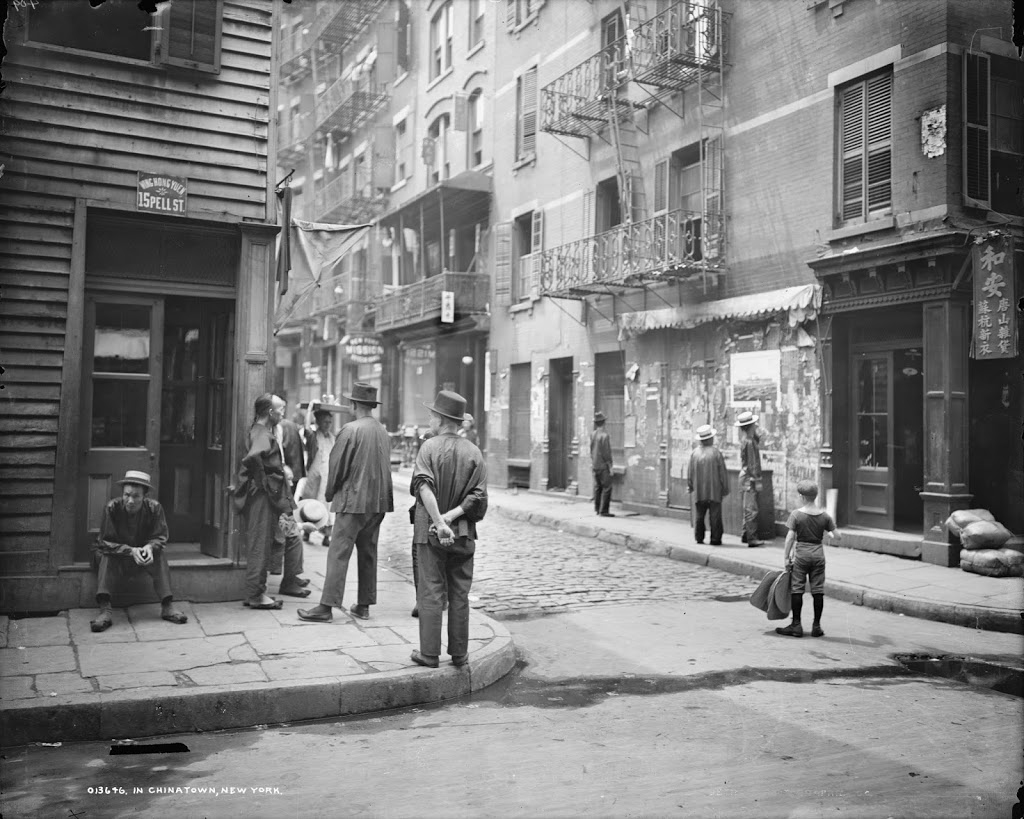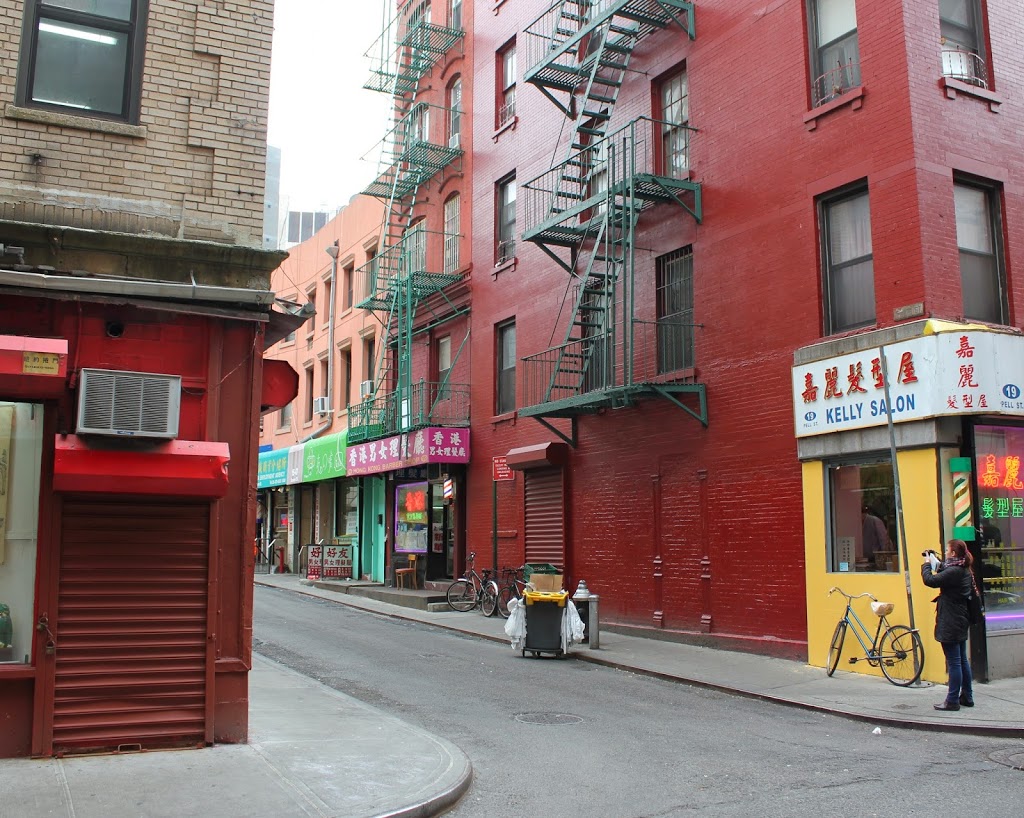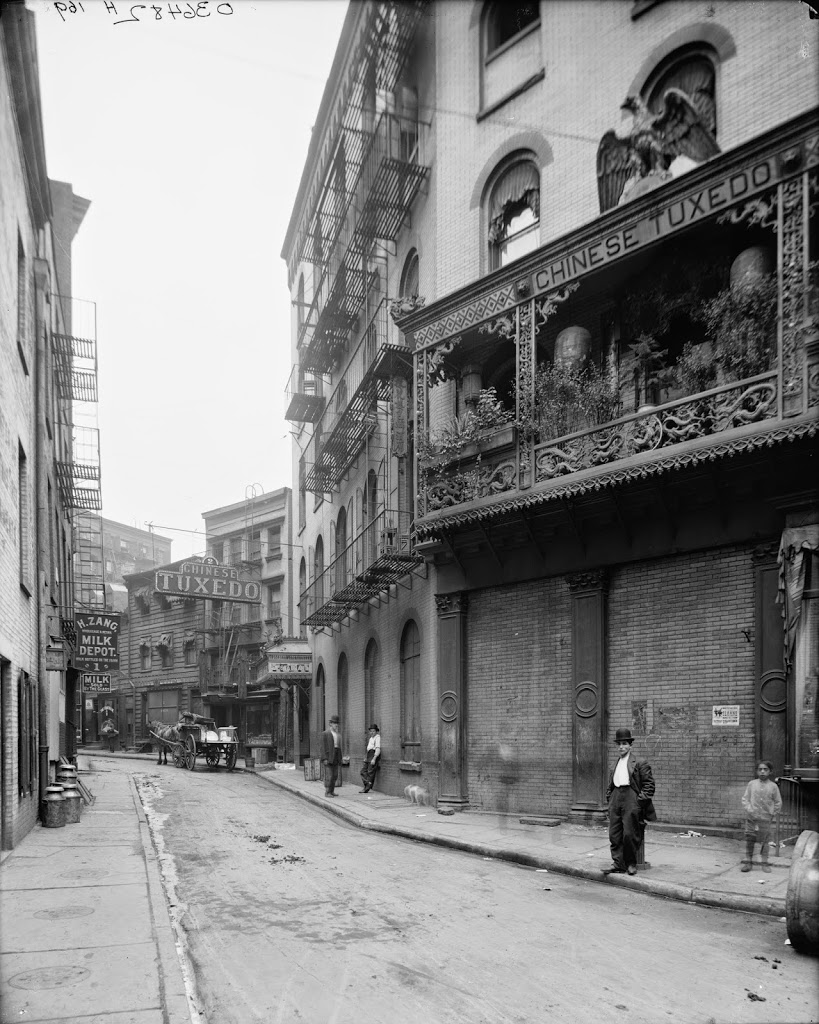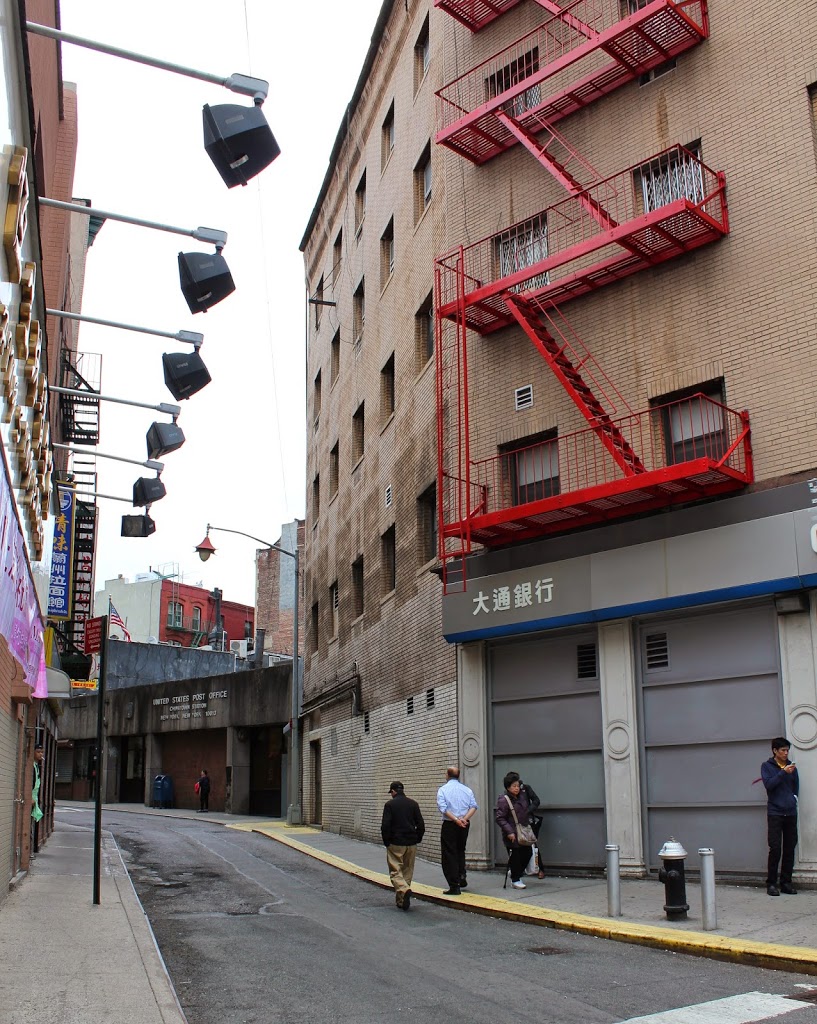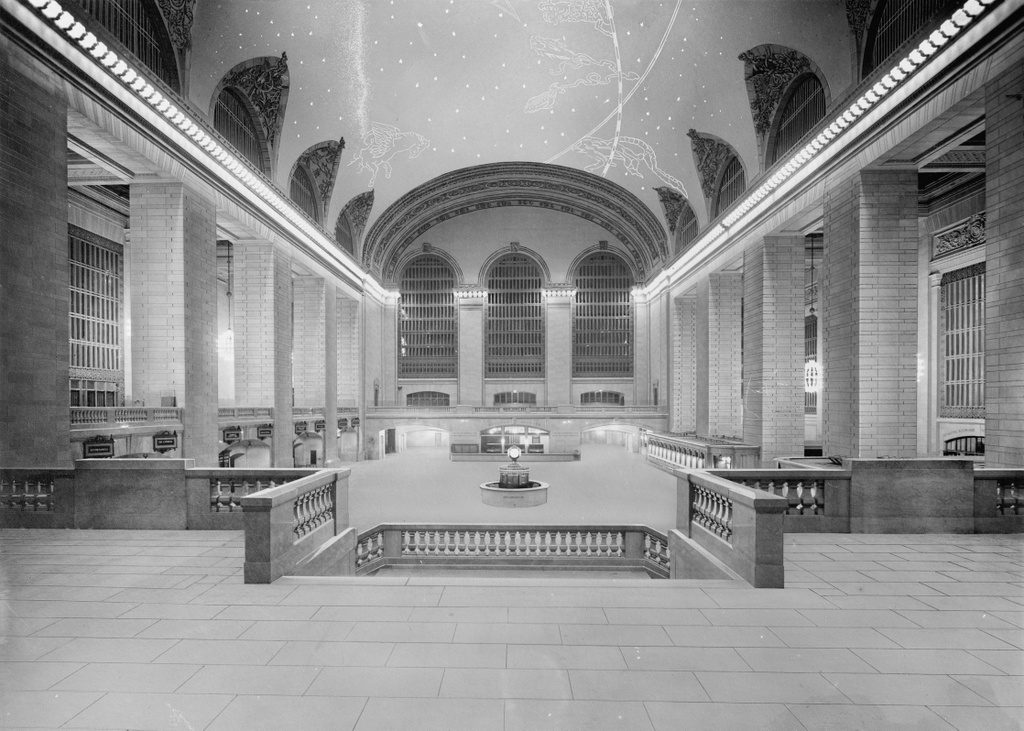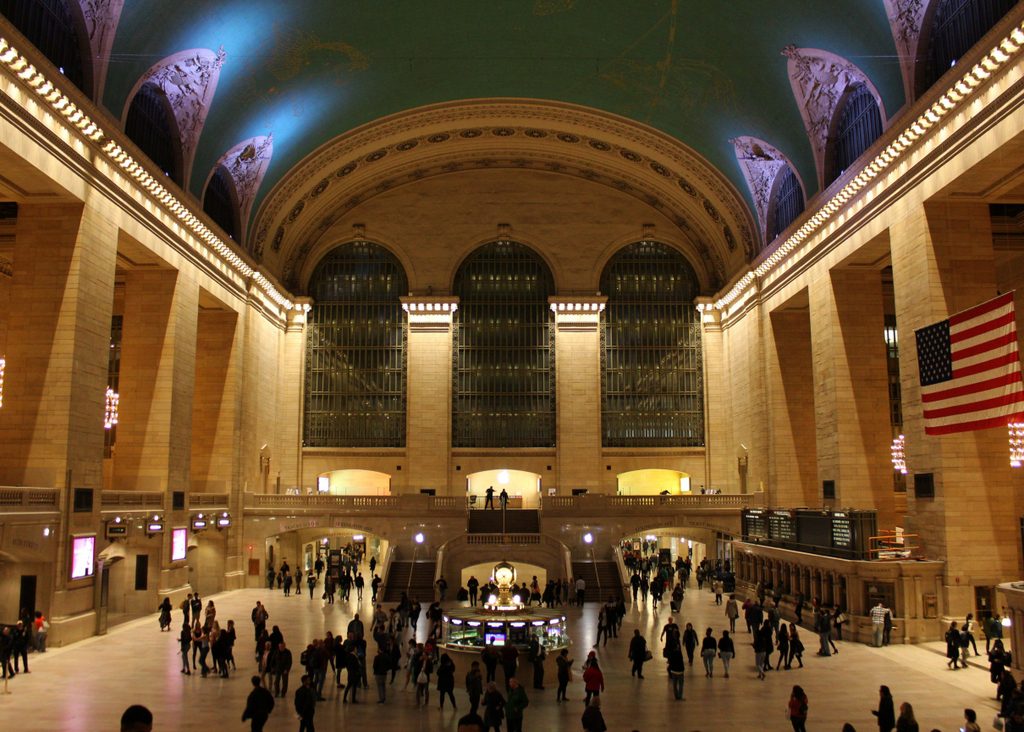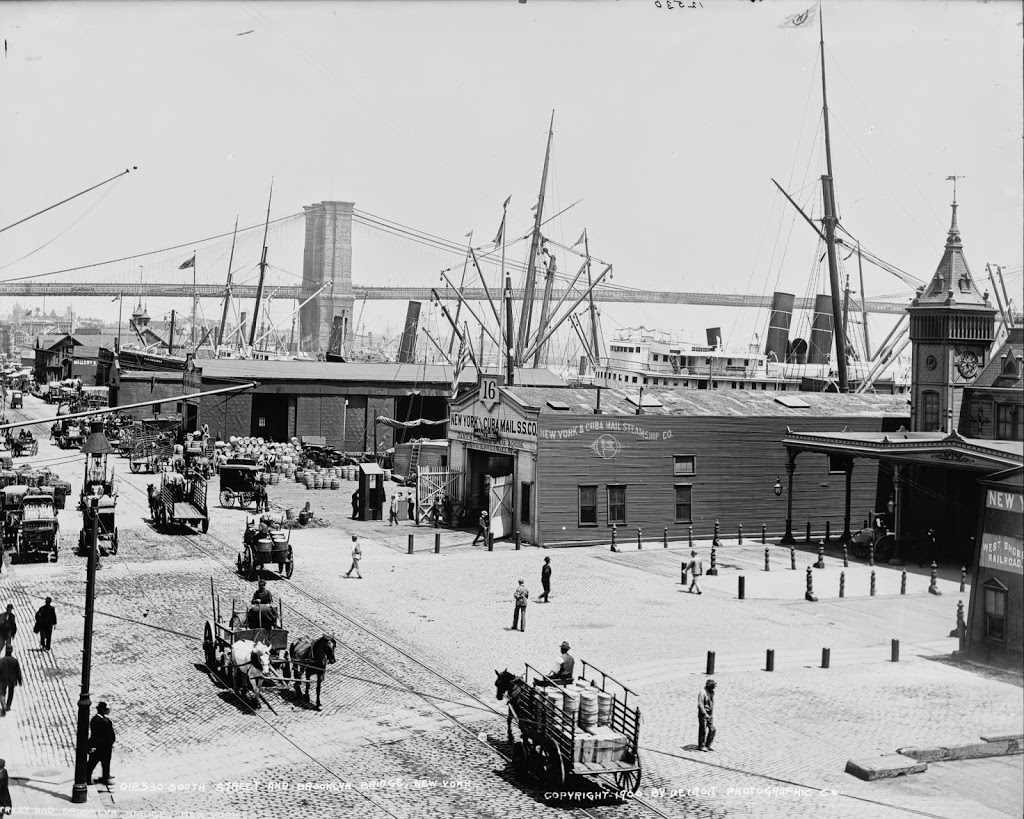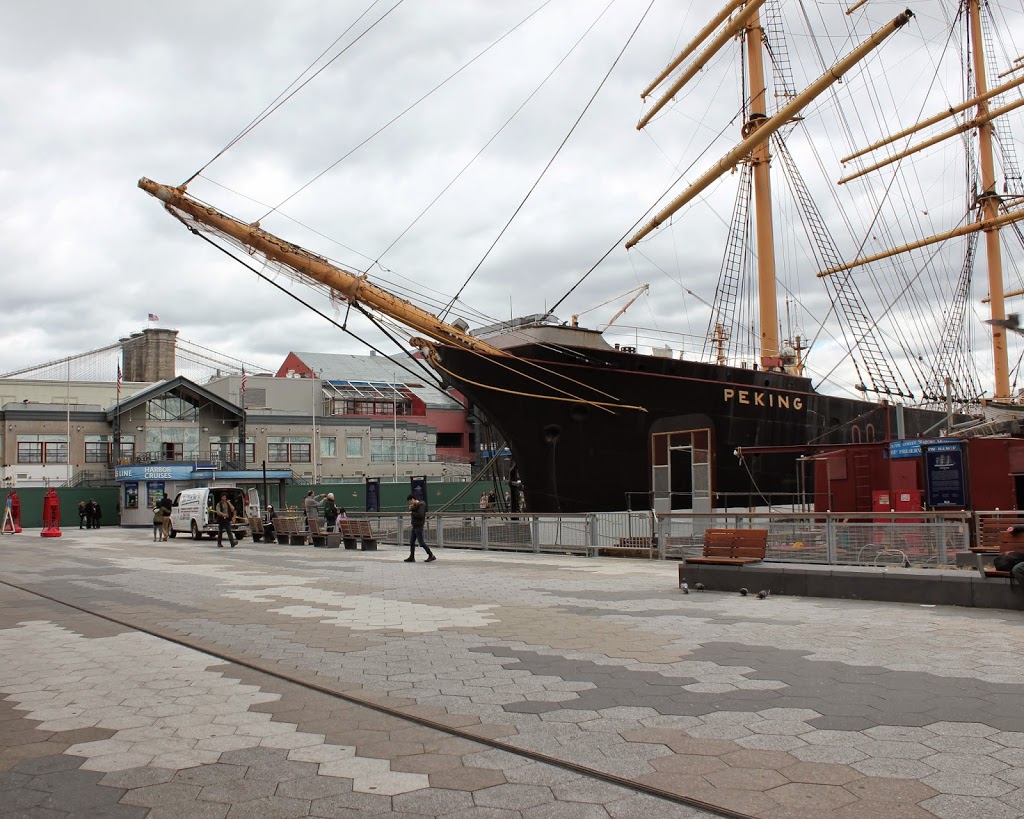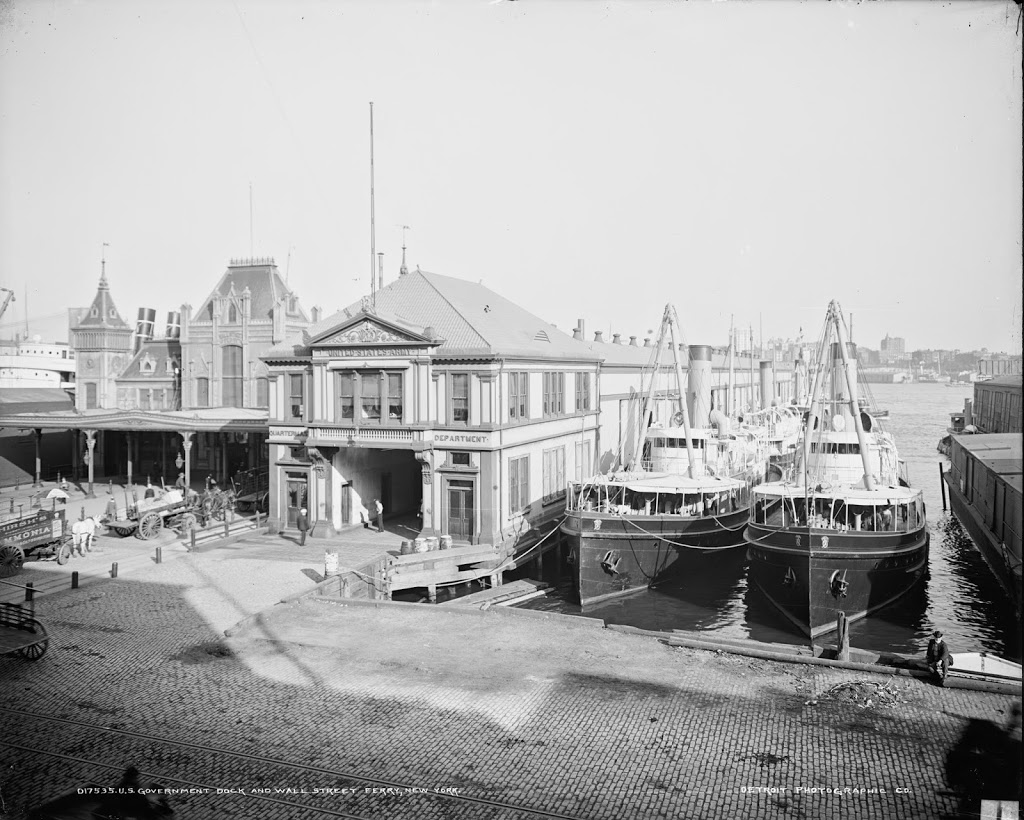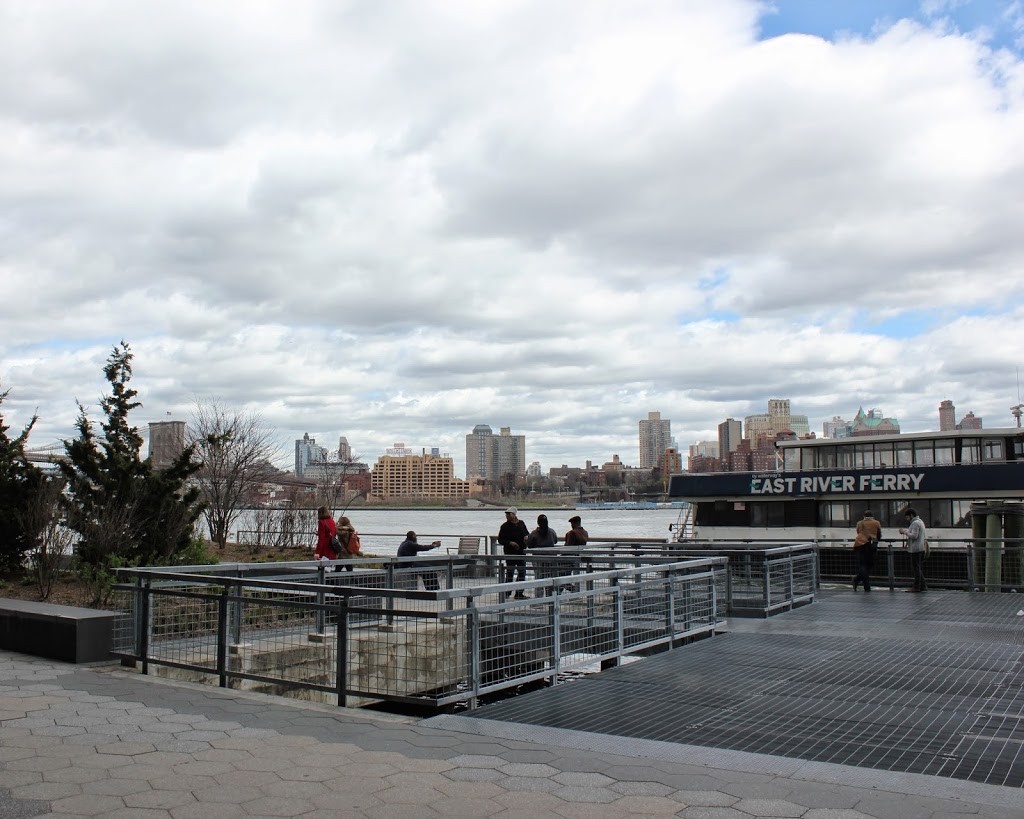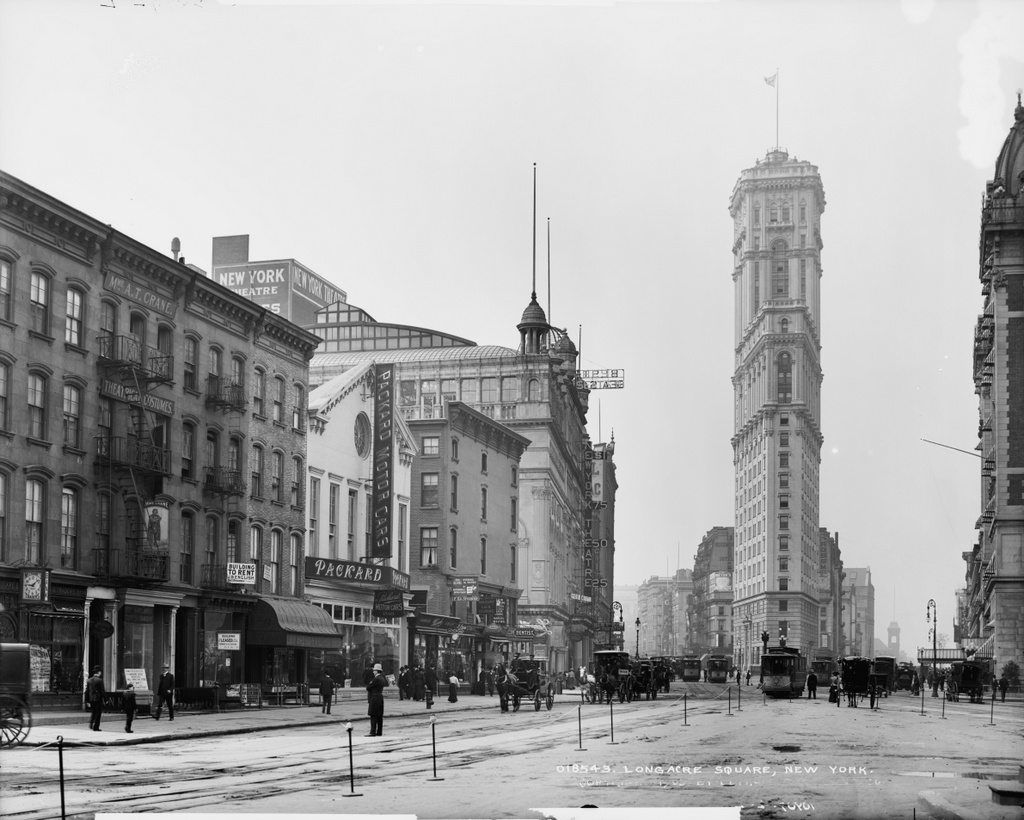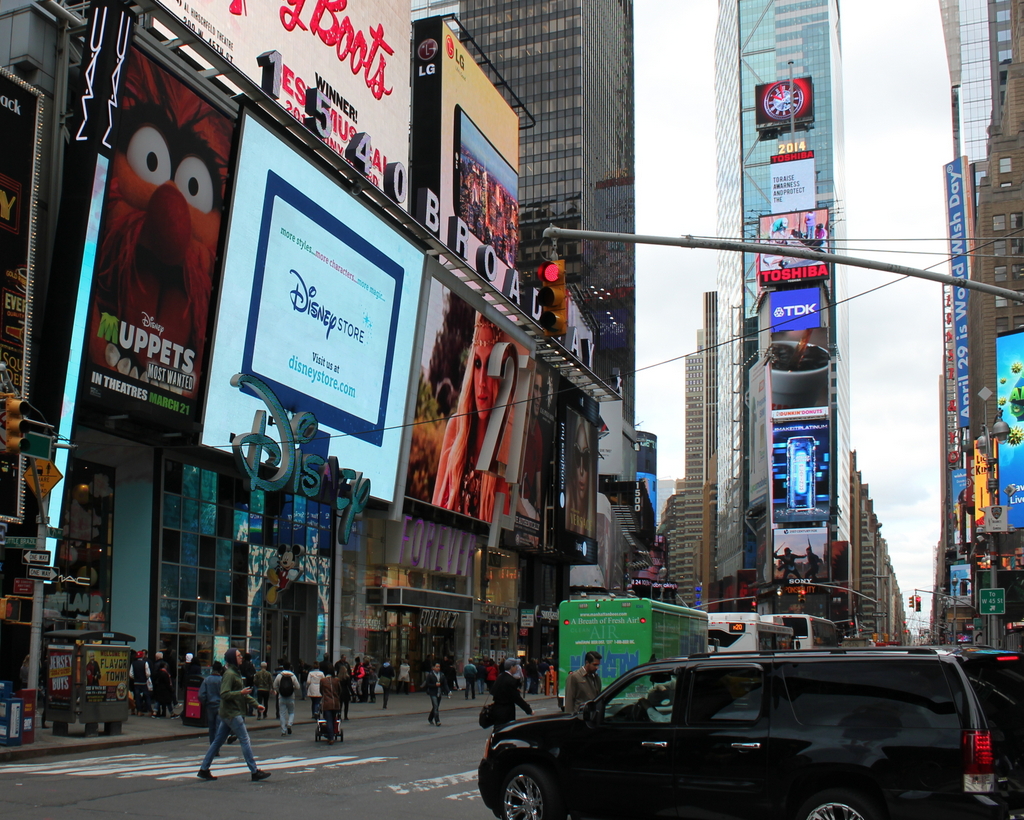The view looking down Doyers Street from Pell Street, around 1900. Image courtesy of the Library of Congress, Detroit Publishing Company Collection.
The view in 2014:
These photos show the other end of Doyers Street, 200 feet from this photo, along the narrow, winding street. Over a century later, it is still at the heart of Chinatown, and even many of the buildings are still there, including the two on the right-hand side of the photo. The building on the left of the 1900 photo, though, is gone, along with most other wood-frame buildings in Manhattan.

